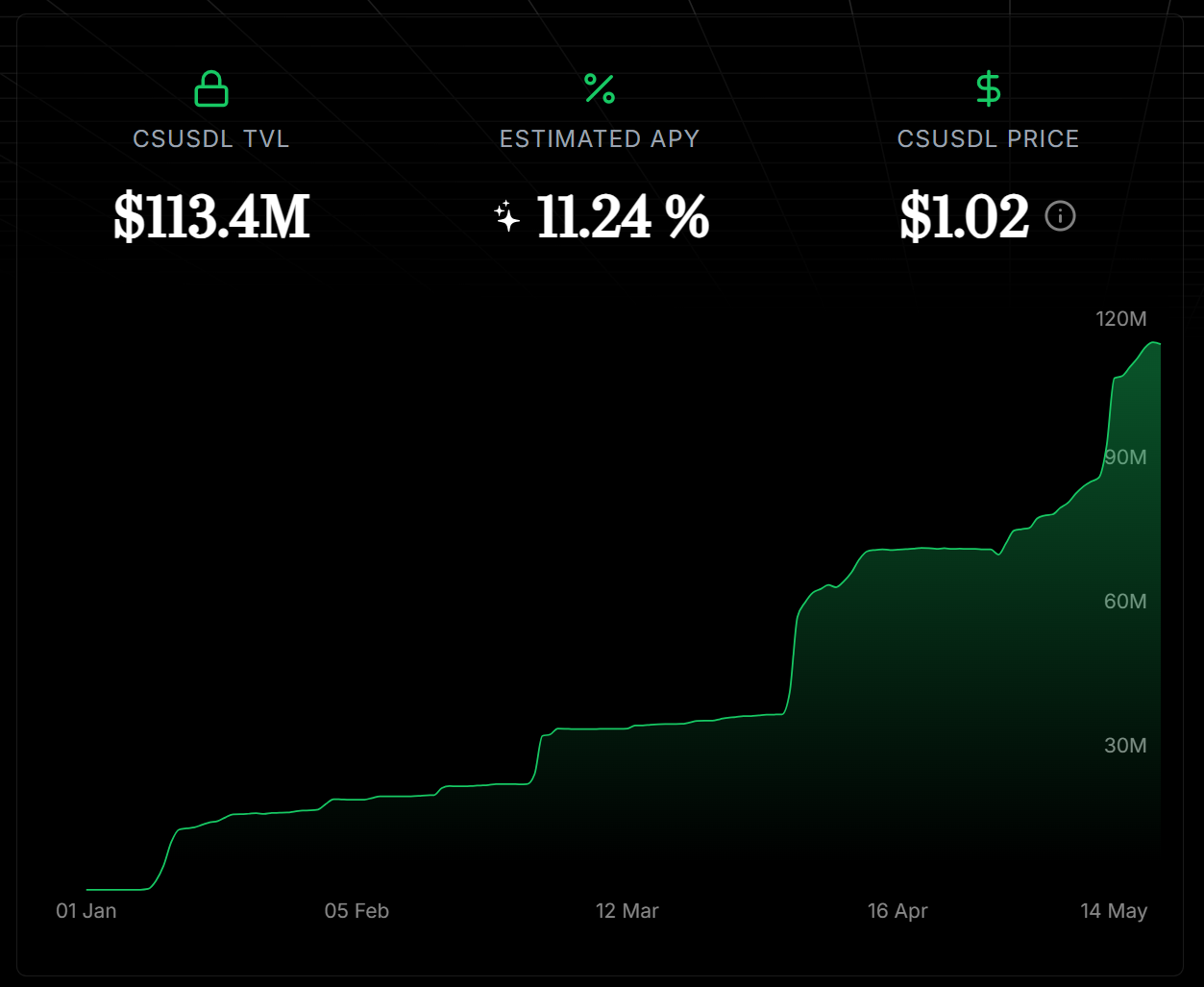
Coinshift’s yield-bearing stablecoin, csUSDL, has quickly crossed $113 million in total value locked, according to the company’s latest announcement. The token is built on top of USDL, a fully backed and FSRA-regulated stablecoin issued by Paxos International. It is live on Ethereum and already integrated across several major DeFi protocols, including Morpho, Pendle, Gearbox, and others.

csUSDL isn’t a typical stablecoin. It acts as a receipt token representing a deposit of wrapped USDL (wUSDL) into the Coinshift USDL Morpho Vault, which is curated by Steakhouse Financial. Steakhouse Financial, known for its work on stablecoin and real-world asset strategies, including MakerDAO’s $2 billion RWA program.
This setup allows csUSDL to generate yield from three primary sources: interest from real-world assets like U.S. Treasury Bills, DeFi lending activity, and token-based rewards. These earnings are either automatically compounded into the token’s value or can be claimed by users.
At present, csUSDL offers an estimated annual yield of around 11.24%. Roughly 5% of this comes from the base yield on USDL, which earns interest from a portfolio of Treasury bills and cash equivalents. That yield is updated daily and reflected directly in the csUSDL share price.
The remaining yield comes from lending activity and rewards. Coinshift deploys the USDL deposits into Morpho, where they are lent to borrowers using overcollateralized assets such as wstETH or cbETH. Borrowers pay interest in real time, currently contributing around 2% APY, though this can fluctuate. On top of that, csUSDL holders earn SHIFT—Coinshift’s native governance token. Five percent of the total SHIFT supply is set aside for early csUSDL users.
Getting csUSDL is fairly straightforward. Users can swap USDC for csUSDL directly on CowSwap. Alternatively, they can buy USDL, wrap it into wUSDL, and deposit it into the Morpho vault to mint csUSDL. The token is also remarkably user-friendly. There is no KYC or KYB required. Just swap into csUSDL and you start earning immediately—no staking, no complex setup. Balances increase daily.
While the SHIFT token has not yet launched, early users are earning points that will eventually convert to the token. Some community members on X (formerly Twitter) have estimated that these rewards could push real yields to between 400% and 900% APY over a matter of months. Given that the underlying strategy carries little to no price volatility, csUSDL has naturally attracted a large crowd of airdrop-focused users.
Founded as a treasury and finance automation platform for DAOs and Web3 companies, Coinshift has built a comprehensive suite of tools that include on-chain payments, accounting, budgeting, and investment management. Protocols like Gitcoin, Aave, UMA, and Zapper—together managing over $1 billion—use Coinshift’s infrastructure to streamline treasury operations.
In 2022, Coinshift raised $17.5 million in a Series A round led by investors including Tiger Global, Sequoia, ConsenSys, and Polygon.

